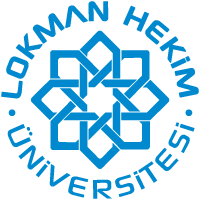| dc.description.abstract | Here, we present the synthesis of novel poly(2,2′:5′,2″-terthiophene) derivatives containing oxyethylene pendant groups for the fabrication of high performance flexible redox-active electrode materials. The poly(3′,4′-bis(2-methoxyethoxy)-2,2′:5′,2″-terthiophene) (PSEDEN1), poly(3′,4′-bis(2-(2-methoxyethoxy)ethoxy)-2,2′:5′,2″-terthiophene) (PSEDEN2) and poly(3′,4′-bis(2-(2-(2-methoxyethoxy)ethoxy)ethoxy)-2,2′:5′,2″-terthiophene) (PSEDEN3) have been electrochemically polymerized on flexible stainless steel substrates without any binder and directly employed as redox-active materials. The effect of pendant group chain length on morphological characteristics of conducting polymer films have been systematically evaluated and correlated to the charge storage properties of redox-active electrode materials. Capacitive performance tests reveal that PSEDEN1, PSEDEN2 and PSEDEN3 could reach up to specific capacitances of 135 F g−1, 212.8 F g−1 and 403.3 F g−1, respectively, at constant current density of 2.5 mA cm−2 in the potential range of 0.4–1.8 V with good rate capability performances. In addition, symmetrical flexible solid-state supercapacitor devices based on polymer gel electrolyte have also been assembled using PSEDEN1, PSEDEN2 and PSEDEN3 coated flexible stainless steel substrates and tested by cyclic voltammetry, galvanostatic charge/discharge and electrochemical impedance spectroscopy techniques in detail. Fabricated devices (Cell 1, Cell 2 and Cell 3) have delivered maximum specific capacitances of Cspec= 29.3 F g−1, 92.1 F g−1 and 162.4 F g−1, energy densities of SE= 6.35 W h kg−1, 22.9 W h kg−1 and 41.1 W h kg−1 and power densities of SP= 929 W kg−1, 937.7 W kg−1 and 986.4 W kg−1 at a current density of 2.5 mA cm−2 in two-electrode cell configuration. Furthermore, flexible supercapacitor devices have achieved high cycle life performances with good capacitance retention values of 80.2%, 84.7% and 91.4% over 10 000 consecutive galvanic charge/discharge cycles at 2.5 mA cm−2 constant current density from 0.4 to 1.8 V. Similarly, excellent mechanical stabilities have also been observed with 3.4%, 4.66% and 1.97% capacitance losses under various bending conditions from 0° to 170° for all flexible supercapacitor devices. These results confirm that PSEDEN1, PSEDEN2 and PSEDEN3 redox-active materials with gratifying capacitive performances and excellent flexibilities have a great potential for utilization in innovative flexible or wearable energy storage solutions. Keywords © 2021 | en_US |















